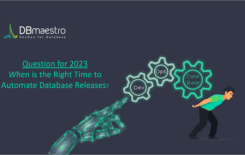For years, software development comprised of working on major product releases with countless features, fixes and updates.
This “Waterfall Model,” a system of development that flows down linearly from concept to testing, has proven to be expensive, slow and buggy. But in recent years, with the implementation of DevOps, the Waterfall model has been steadily dropped by companies in favor of the Agile method, in the war of Waterfall vs. Agile.
Waterfall vs. Agile: Which Way Should You Go?
DevOps is a system that allows for rapid progress using continuous integration and development. The Agile method results in faster product releases that are small enough to change quickly if bugs or errors are found.
So instead of spending lots of time adding features before you release, you can launch multiple releases, constantly testing and adding or revising features along the way. This will not only save you valuable time, but it means you’ll be quick on your feet to respond to customer feedback, bugs and other issues such as feature fatigue.
Companies employing this approach experience “60 percent fewer code deployment failures and they recover from failures 168 times faster, all the while delivering code updates 30 times faster,” according to a recent report. But many IT companies are struggling with making a choice in Waterfall vs. Agile and shifting from traditional software development to an Agile-based methodology.
So Why Struggle with Waterfall vs. Agile?
The primary reason for this difficulty is often the result of lack of desire by employees to alter or expand their roles and implement the techniques necessary for a proper transition. Developers, for example, tend to be strong-willed when it comes to coding and often fail to take responsibility for their work. Testing is seen as a low-level role by high-ranking coders, but sometimes it’s the lack of comfort in testing that’s to blame.
Businesses are not alone, however. While a firm will always need the cooperation of all its employees, the heavy burden often associated with implementing an Agile-based continuous deployment system or database has been lessened by consulting firms and automation systems that can scale to support hundreds or even thousands of projects.
No transition of this magnitude is ever completely smooth. Roles shift, processes change and resistance within the workplace is not unusual. The results speak for themselves, however, with higher quality releases, faster production time and fewer bugs. In the choice of Waterfall vs. Agile, the road to Agile DevOps is a long one, but the value it presents is unquestionable.






